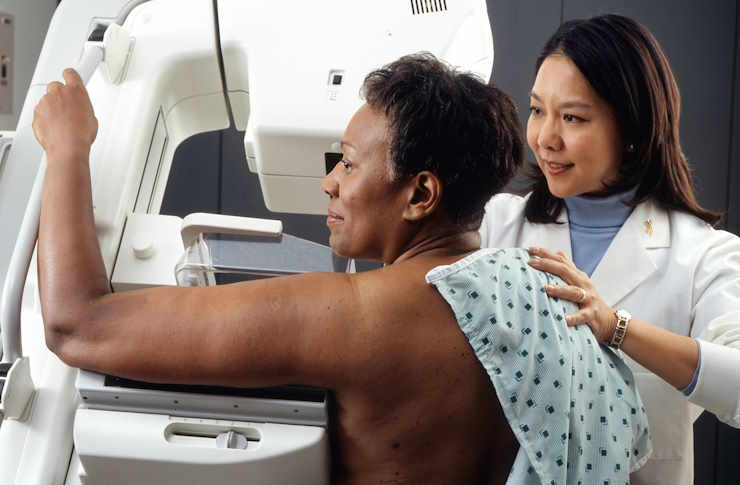Breast Cancer Treatment: Early Detection and Care Options
Early detection of breast cancer can play a critical role in care and treatment decisions. It’s important to stay aware of changes such as lumps, skin dimpling, nipple discharge, or discomfort. Regular screenings and self-checks may help identify symptoms early.

What Are the Early Warning Signs of Breast Cancer?
Recognizing early breast cancer symptoms is crucial for timely intervention. The most common signs include new lumps or masses in the breast or underarm area, changes in breast size or shape, and skin changes such as dimpling, puckering, or redness. Other important symptoms to monitor include nipple discharge that isn’t breast milk, nipple inversion, and persistent breast or nipple pain. Changes in skin texture, such as thickening or scaling, particularly around the nipple area, should also prompt medical evaluation. It’s important to note that many of these symptoms can have non-cancerous causes, but any persistent changes warrant professional assessment.
How Can You Detect Breast Cancer Early?
The ability to detect breast cancer early significantly improves treatment outcomes and survival rates. Regular mammographic screenings form the cornerstone of early detection, with most medical organizations recommending annual mammograms starting at age 40 or 50, depending on individual risk factors. Monthly breast self-examinations help women become familiar with their normal breast tissue, making it easier to notice changes. Clinical breast examinations performed by healthcare providers during routine check-ups add another layer of screening. For women with higher risk factors, additional screening methods such as breast MRI or ultrasound may be recommended by their healthcare team.
What Treatment Options Are Available for Breast Cancer?
Breast cancer treatment approaches have evolved significantly, offering patients multiple options tailored to their specific diagnosis and circumstances. Surgical options include lumpectomy, which removes the tumor while preserving most of the breast, and mastectomy, which involves removing all or part of the breast tissue. Radiation therapy uses high-energy beams to destroy cancer cells and is often used after surgery to eliminate remaining cancer cells. Chemotherapy employs medications to destroy cancer cells throughout the body, while hormone therapy blocks hormones that fuel certain types of breast cancer. Targeted drug therapies focus on specific abnormalities within cancer cells, offering more precise treatment with potentially fewer side effects.
How Do Doctors Determine the Best Treatment Plan?
Treatment planning for breast cancer involves careful consideration of multiple factors to create an individualized approach. The stage and grade of the cancer, determined through biopsy and imaging studies, play crucial roles in treatment decisions. Hormone receptor status and HER2 protein levels help doctors understand which therapies will be most effective. Patient factors such as age, overall health, personal preferences, and family history also influence treatment recommendations. Many patients benefit from a multidisciplinary team approach, where oncologists, surgeons, radiologists, and other specialists collaborate to develop comprehensive treatment strategies that address both the cancer and the patient’s quality of life.
What Unique Resources Exist for Breast Cancer Care in America?
The United States offers exceptional resources for breast cancer patients, including comprehensive cancer centers designated by the National Cancer Institute that provide cutting-edge research and treatment options. Many states have specific programs to ensure access to mammography services for underserved populations, such as the National Breast and Cervical Cancer Early Detection Program. Patient navigation services, available at many medical facilities across the country, help guide individuals through the complex healthcare system from diagnosis through treatment completion. Support groups, both in-person and virtual, connect patients with others sharing similar experiences, while organizations like the American Cancer Society provide extensive educational resources and practical assistance programs tailored to diverse communities throughout America.
What Are the Costs Associated with Breast Cancer Treatment?
Breast cancer treatment costs can vary significantly depending on the type and extent of treatment required. Early-stage treatments typically range from $20,000 to $100,000, while advanced-stage treatments can exceed $200,000. Insurance coverage through employer plans, Medicare, or Marketplace plans typically covers most treatment costs, though out-of-pocket expenses for deductibles and co-payments can still be substantial. Many major medical centers offer financial assistance programs and payment plans to help manage treatment costs.
| Treatment Type | Estimated Cost Range | Typical Duration | Insurance Coverage |
|---|---|---|---|
| Mammography Screening | $100-$250 | Annual | Usually 100% covered |
| Lumpectomy | $15,000-$25,000 | Same day/overnight | 80-90% typically covered |
| Mastectomy | $20,000-$50,000 | 1-3 day stay | 80-90% typically covered |
| Chemotherapy (full course) | $30,000-$150,000 | 3-6 months | Variable, often 70-80% |
| Radiation Therapy | $10,000-$50,000 | 5-7 weeks | Usually 80-90% covered |
Prices, rates, or cost estimates mentioned in this article are based on the latest available information but may change over time. Independent research is advised before making financial decisions.
Conclusion
Understanding breast cancer treatment begins with recognizing the critical importance of early detection and staying informed about available options. Regular screenings, self-awareness, and prompt medical attention for concerning symptoms create the foundation for successful outcomes. Modern treatment approaches offer hope and effectiveness, with personalized care plans addressing individual needs and circumstances. The combination of advancing medical technology, comprehensive support systems, and increased awareness continues to improve outcomes for breast cancer patients across the United States, emphasizing that early action and informed decision-making remain the most powerful tools in fighting this disease.
This article is for informational purposes only and should not be considered medical advice. Please consult a qualified healthcare professional for personalized guidance and treatment.




